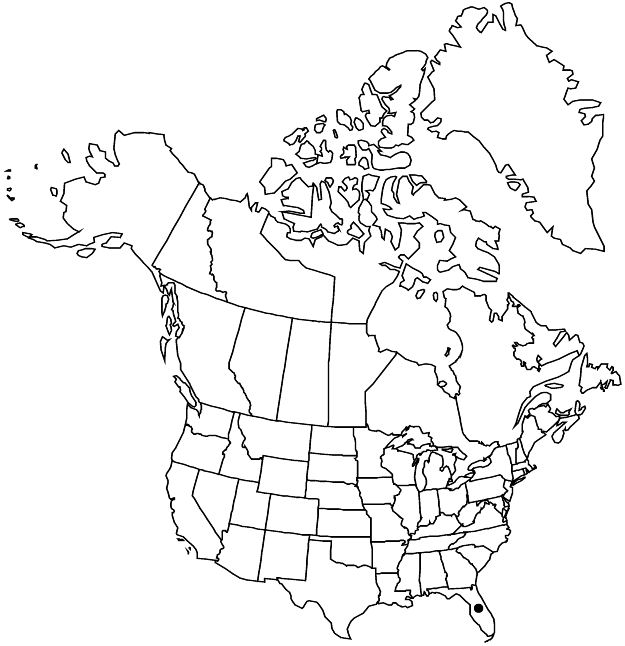Phoradendron rubrum
Fl. Brit. W.I., 314. 1860.
Subshrubs, erect, 3.5–5 dm, monoecious. Stems green, glabrous; internodes quadrangular proximally, flattened distally, keeled proximally to nodes, 20–30 × 3(–7) mm. Leaves dull green, well developed; petiole (3–)5(–8) mm; blade obovate, elliptic, oblanceolate, or oblong-lanceolate, (40–)50.5(–90) × 20–40 mm, thin, base cuneate, apex rounded; basal phyllotaxy median. Inflorescences bisexual, staminate flowers few, irregularly placed among pistillate, to 25 mm; peduncle with 1(–2) internodes, each 3 mm; fertile internodes 3, each 6–18-flowered, biseriate, flowers 1–4 per column. Flowers: petals 3, 1 mm. Berries lemon yellow or orange [pink, red], ovoid to globose, 4 × 3 mm, glabrous.
Phenology: Flowering throughout the year.
Habitat: Hammocks with West Indian mahogany.
Elevation: 0–500 m.
Distribution

Fla., West Indies.
Discussion
Phoradendron rubrum is a mainly Caribbean species that has been recorded in the flora area only from Key Largo, Monroe County. Its primary host is Swietenia mahagoni, but it has been found also on Byrsonima, Guapira, Mangifera, and Pisonia.
Selected References
None.